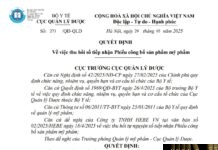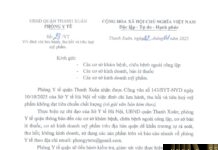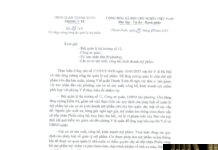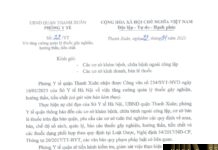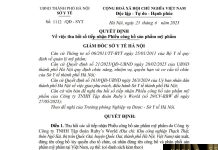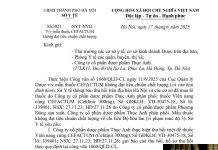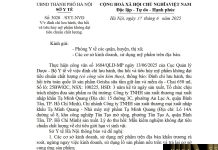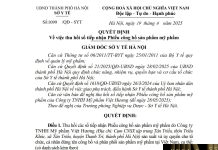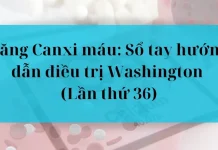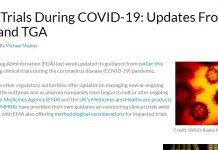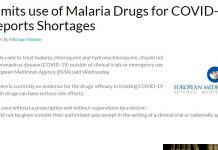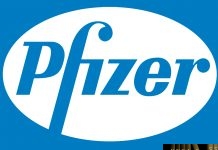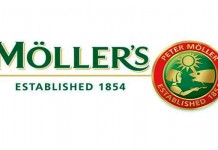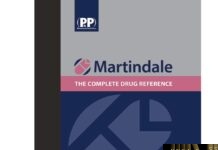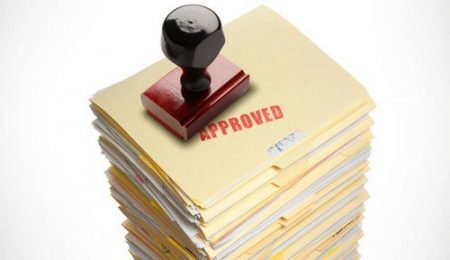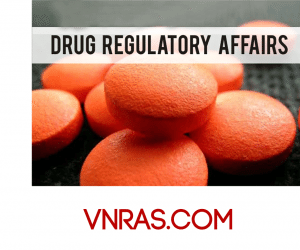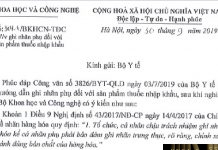The cases which are not granted registration numbers when evaluating Drug Registration dossiers in Vietnam
Validating registration dossiers in Vietnam in the official letter 21501/QLD-ĐK
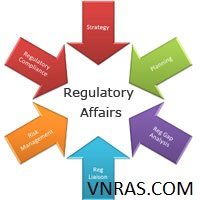
After summarize the evaluation results of dossiers in recent times revealed that the preparation of drug registration dossier of almost companies has not been paid adequately attention, the quality of dossiers is still low and it is required to be supplemented many times (more than 95% of registration dossier for domestic drugs and 75% of registration dossiers for foreign drugs have not met the requirements after the first evaluation); the consequence is that the experts had to review the reg. dossier in many times that causing a long delay for the evaluation and granting of registration numbers from the authority, affecting the production and business of the companies.
In order to enhance the companies’ responsibility, the quality of dossiers, shorten the time line frame for the evaluation of drug registration dossiers, ensure the publicity, transparency and uniformity in the process of evaluation drug registration dossiers, Drug Administration have issued: “Guiding on evaluation for drug registration dossiers” (be sent together with this official letter). This is the basis for experts proposing to Drug Administration in the process of evaluation drug registrations dossiers.
Sincere thanks for the co-operation of the experts.
GUIDING ON EVALUATION FOR REGISTRATION DOSSIERS
(Accompany with the official letter No.21501/QLD-ĐK dated December 10th 2014 of
Drug Administration of Vietnam)
I. Cases subject to not grant registration number after the first evaluation
|
Evaluation content |
Cases subject proposed to not grant registration number |
| Part 1. General Regulations | |
| 1. General Regulations | 1.1 The data is not true, not generated from actual research, formula development; copied information.
1.2 Dossier preparation is sketchy, not full of sections, the arrangement is messy, sloppy, not follow the instruction or lack the dossier according to regulations of ACTD/CTD dossier. |
| Part 2. Legal subcommittee | |
| 1. Application form | 1.1 Pharmaceutical dosage form/formula/content or strength are not consistent with CPP or FSC or other documents of dossier (manufacturing process, stability, BA/BE, …)
1.2 Fakement of seal/stamp or signatures of applicants and manufacturers |
| 2. CPP, FSC, GMP | 2.1 The legal is not reliable: Information on issued date is invalid; erased; issuance is ultra vires or is not according to regulations, specifically as follows:
– Do not have name, address of manufacturer, or have but not consist with application form. – Do not have the pharmaceutical dosage form, formula including active substance(s) and excipient(s). – Do not have the signing date or have but it is invalid. 2.2 Manufacture under loan licence. 2.3 CPP does not have the pharmaceutical dosage form of registration drug; does not comply with GMP-WHO; FSC does not have components and content of active substances; CPP/FSC does not have or has component of excipients that is different with registration drug. |
| 3. Product information | 3.1 Errors related to the drug (component of active pharmaceutical ingredient(s) (API), content/strength of API, pharmaceutical dosage form). |
| Part III. Quality subcommittee | |
| 1. Certificate of analysis of finished product | 1.1 Certificate of analysis has test(s) that do(es) not meet the requirement(s).
1.2 Tests, specifications in the certificate of analysis are not compatible with specification of registration finished product. 1.3 Certificate of analysis is not compatible with drug sample, raw medicinal material(s) which are registered for circulation. 1.4 Sign, stamp on the certificate of analysis do not belong to the manufacturer or batch releaser. |
| 2. Specification of finished product, analytical procedures | 2.1 Specification is not sufficient, lacking of basic test(s) for each pharmaceutical dosage form specified in pharmacopoeia.
2.2 Specification is registered according to pharmacopoeia but actually it is not on pharmacopoeia. 2.3 Analytical procedure: infeasible; nonspecific; there is evidence revealed that it has not validated fully before applying. |
| 3. Specification of Container Closure System | 3.1 Lack of in-house specification or specification of manufacturer. |
| 4. Validation of analytical procedures | 4.1 There is no document for validation of analytical procedure.
4.2 Raw data is not correct; incompatible with data processing on validation dossier. 4.3 There is evidence of copy, dishonesty. 4.4 Validation of analytical procedures is inconsistent with specification, test methods. |
| 5. Drug substance | 5.1 Specification is registered according to pharmacopoeia but actually it is not on pharmacopoeia.
5.2 Not define the configuration of impurities or the control of impurities in specification is not compatible with configuration. 5.3 Specification lacks the important test(s), test method is infeasible, unspecific. |
| Part IV. Preparing, stability subcommittee | |
| 1. Full technical dossier | 1.1 There is evidence of copy, dishonesty. |
| 2. Application form | 2.1 Pharmaceutical dosage form/composition/content or strength of active ingredient(s), excipient(s) are not consistent between application form and other sections in dossier or drug sample. |
| 3. Drug sample | 3.1 Sample provided by the manufacturer is not correct.
3.2 Sample is not same as described in the dossier. 3.3 Storage condition mentioned on the label is not consistent with stability data (P8). |
| 4. Drug substance (S) | 4.1 Information on manufacturer or batch releaser of drug substance is different from stability studies/ certificate of analysis of drug substance.
4.2 Name, salt form of drug substance in stability document, specification of drug substance are different from the application form and CPP. 4.3 Information in S section is not the information of drug substance (derivative, salt, …), bulk product (pellet, compact granules, mixed mixture, …) used in P part. 4.4 Results of tests in stability studies are not complied with the registered specification of drug substance. |
| 5. Description and composition (P1) | 5.1 Formulation is not consistent with CPP and other parts in dossier. |
| 6. Pharmaceutical development (P2) | 6.1 Information in dossier is not consistent with the result of pharmaceutical development mentioned in P2 (formulation, manufacturing process, specification of finished product, stability, …). |
| 7. Manufacturing process (P3.1, P3.2) | 7.1 Batch formula is not correct.
7.2 Manufacturing process is impossible to be carried out. 7.3 Batch size is not suitable for the equipments. 7.4 Description of critical steps of manufacturing process is lacking/ incorrect. Data is not consistent among the sections (overall, chart, description, …). |
| 8. Controls of critical steps and intermediates (P3.3) | 8.1 Lack of controls of critical steps and intermediates that are not validated adequately in process validation. |
| 9. Process validation (P3.4) | 9.1 Lack of process validation document (both protocol and data).
9.2 Protocol and report are not suitable for manufacturing process. 9.3 Critical steps and specifications are not validated. |
| 10. Control of excipients (P4) | 10.1 Excipients mentioned in P4 are not the types used in P3. |
| 10.2 Specification of excipients can not find in the references (as pharmacopoeia, if any). | |
| 11. Container closure system (P7) | 11.1 Packaging does not comply with the pharmaceutical dosage form.
11.2 Packaging is different with the one used in P1, P2 and P8. |
| 12. Stability | 12.1. Do not have stability study protocol or protocol is inappropriate (ex: storage condition is inappropriate, do not evaluate the tests for stability, …).
12.2 There is evidence of dishonesty (duration of stability study is not consistent with shelf-life or with the time when buying, importing narcotic substance, psychotropic substance, pre-substance for production and study). 12.3 Equipments for stability study are not suitable to pharmaceutical dosage form. 12.4 Conducting of stability study does not comply with the protocol. Lacking critical parameters that cause risk of changes or reduction of the product quality during storage period. 12.5 There is parameter(s) that do(es) not comply with specification in the stability study result. |
| Part V: Pharmacology and clinical subcommitee | |
| 1. Pharmacology | 1.1 The content of documents is incorrect with the essence of drug.
1.2 Pharmaceutical dosage form/strength does not comply with dosage. |
| 2. Clinical | 2.1 For new drug, there is not clinical trial(s) or the clinical trial(s) do(es) not comply with regulations or can not provide approved clinical trial documents.
2.2 There is no base and no scientific documents to prove the combination of components, content/strength, indication(s) for drug product. |
| Part VI: Bioequivalence subcommittee | |
| 1. General | 1.1 There is signs of copy & dishonesty, conflicting & unlogical data between the parts/items as the sequence of study or in the reporting contents in the dossier. |
| 2. Research centres | 2.1 Having evidence that is the provided dishonest information.
2.2 Do not provide the legal documents according to regulations. |
| 3. Research drug | 3.1 Information for drug sample using for studies is not suitable with registration drug and/ or there are inappropriate explanation. |
| 4. Control drug (Comparator product) | 4.1 Not meet the requirements of selecting comparator product but there are not explanation or documents evidencing to convince.
4.2 Not explain or provide convincing evidence for sufficient basis to accept comparator product. |
| 5. Research protocol and approval of Ethics Council | 5.2 Protocol is not suitable for research and/or explanation is not satisfactory, and not appropriate. |
| 6. Analysis method | 6.1 There are evidence revealed that method unsuitable or data is given incorrectly. |
| 7. Results of statistical analysis | 7.1 Results are calculated incorrectly or drug is not reached equivalent level according to general regulations |
| 8. Original data (clinical documents, chromatograms…) | 8.1 Original data is not suitable for the results in the summarized reports or research process, data has been repaired which does not comply with the regulations, and show signs of dishonesty. |
| 9. Research results | 9.1 Not meet equivalent level according to regulations at approved protocol before performance.
9.2 The rate occurs adverse drug reactions (ADR) of investigational product is significant more than comparator product. 9.3 Food has a significant effect to bioavailability of the product but there is no explanation or adjusted solution. |
II. Cases are not granted after submitted supplement dossier
- Supplement dossier after the first evaluation due to lack of data according to regulation and be permitted to supplement, but supplement dossier is belong to one of cases defining at section I.
- Supplement dossier have some information, data which is not required to supplement, amend but they are made variation compare with initial submission dossier without demonstration /explanation letter enclosed.
- Supplement dossier have information, data conflict with initial submission dossier but there is not convincing
- Supplement insufficiently according to requirements without explanation.
- Supplementing 02 times for 1 feedback letter except cases in which the feedback letter contains requirements for supplement required long time to perform as follows:
- Quality control testing of finish product.
- Supplement of GMP/FSC/CPP or other legal documents.
- Supplement of new stability data according to Drug Administration’s request.
- BA/BE data or clinical dossier.
- The 3rd supplement dossier for 1 content still does not satisfy the request.
THE ORIGINAL LETTER: 21501_QLD_ĐK_VNRAS
The cases which are not granted registration numbers when evaluating Drug Registration dossiers in Vietnam
Validating registration dossiers in Vietnam in the official letter 21501/QLD-ĐK

After summarize the evaluation results of dossiers in recent times revealed that the preparation of drug registration dossier of almost companies has not been paid adequately attention, the quality of dossiers is still low and it is required to be supplemented many times (more than 95% of registration dossier for domestic drugs and 75% of registration dossiers for foreign drugs have not met the requirements after the first evaluation); the consequence is that the experts had to review the reg. dossier in many times that causing a long delay for the evaluation and granting of registration numbers from the authority, affecting the production and business of the companies.
In order to enhance the companies’ responsibility, the quality of dossiers, shorten the time line frame for the evaluation of drug registration dossiers, ensure the publicity, transparency and uniformity in the process of evaluation drug registration dossiers, Drug Administration have issued: “Guiding on evaluation for drug registration dossiers” (be sent together with this official letter). This is the basis for experts proposing to Drug Administration in the process of evaluation drug registrations dossiers.
Sincere thanks for the co-operation of the experts.
GUIDING ON EVALUATION FOR REGISTRATION DOSSIERS
———————————————————————————————
- The 3rd supplement dossier for 1 content still does not satisfy the request.
THE ORIGINAL LETTER: 21501_QLD_ĐK_VNRAS
ENGLISH VERSION: 21501_QLD_ĐK_EN


